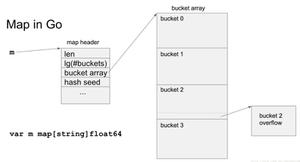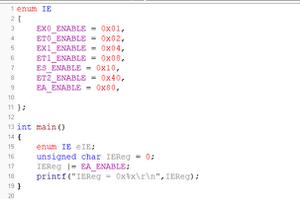Python cookbook(数据结构与算法)找出序列中出现次数最多的元素算法示例
本文实例讲述了Python找出序列中出现次数最多的元素。分享给大家供大家参考,具体如下:
问题:找出一个元素序列中出现次数最多的元素是什么
解决方案:collections模块中的Counter类正是为此类问题所设计的。它的一个非常方便的most_common()方法直接告诉你答案。
# Determine the most common words in a list
words = [
'look', 'into', 'my', 'eyes', 'look', 'into', 'my', 'eyes',
'the', 'eyes', 'the', 'eyes', 'the', 'eyes', 'not', 'around', 'the',
'eyes', "don't", 'look', 'around', 'the', 'eyes', 'look', 'into',
'my', 'eyes', "you're", 'under'
]
from collections import Counter
word_counts = Counter(words)
top_three = word_counts.most_common(3)
print(top_three)
# outputs [('eyes', 8), ('the', 5), ('look', 4)]
# Example of merging in more words
morewords = ['why','are','you','not','looking','in','my','eyes']
word_counts.update(morewords) #使用update()增加计数
print(word_counts.most_common(3))
>>> ================================ RESTART ================================
>>>
[('eyes', 8), ('the', 5), ('look', 4)]
[('eyes', 9), ('the', 5), ('my', 4)]
>>>
在底层实现中,Counter是一个字典,在元素和它们出现的次数间做了映射。
>>> word_counts
Counter({'eyes': 9, 'the': 5, 'my': 4, 'look': 4, 'into': 3, 'around': 2, 'not': 2, "don't": 1, 'under': 1, 'are': 1, 'looking': 1, "you're": 1, 'you': 1, 'why': 1, 'in': 1})
>>> word_counts.most_common(3) #top_three
[('eyes', 9), ('the', 5), ('my', 4)]
>>> word_counts['not']
2
>>> word_counts['eyes']
9
>>> word_counts['eyes']+1
10
>>> word_counts
Counter({'eyes': 9, 'the': 5, 'my': 4, 'look': 4, 'into': 3, 'around': 2, 'not': 2, "don't": 1, 'under': 1, 'are': 1, 'looking': 1, "you're": 1, 'you': 1, 'why': 1, 'in': 1})
>>> word_counts['eyes']=word_counts['eyes']+1 #手动增加元素计数
>>> word_counts
Counter({'eyes': 10, 'the': 5, 'my': 4, 'look': 4, 'into': 3, 'around': 2, 'not': 2, "don't": 1, 'under': 1, 'are': 1, 'looking': 1, "you're": 1, 'you': 1, 'why': 1, 'in': 1})
>>>
增加元素出现次数可以通过手动进行增加,也可以借助update()方法;
另外,Counter对象另一个特性是它们可以同各种数学运算操作结合起来使用:
>>> a=Counter(words)
>>> a
Counter({'eyes': 8, 'the': 5, 'look': 4, 'my': 3, 'into': 3, 'around': 2, 'under': 1, "you're": 1, 'not': 1, "don't": 1})
>>> b=Counter(morewords)
>>> b
Counter({'not': 1, 'my': 1, 'in': 1, 'you': 1, 'looking': 1, 'are': 1, 'eyes': 1, 'why': 1})
>>> c=a+b
>>> c
Counter({'eyes': 9, 'the': 5, 'my': 4, 'look': 4, 'into': 3, 'around': 2, 'not': 2, "don't": 1, 'under': 1, 'are': 1, 'looking': 1, "you're": 1, 'you': 1, 'in': 1, 'why': 1})
>>> # substract counts
>>> d=a-b
>>> d
Counter({'eyes': 7, 'the': 5, 'look': 4, 'into': 3, 'my': 2, 'around': 2, 'under': 1, "you're": 1, "don't": 1})
>>>
当面对任何需要对数据制表或计数的问题时,Counter对象都是你手边的得力工具。比起利用字典自己手写算法,更应采用该方式完成任务。
(代码摘自《Python Cookbook》)
更多关于Python相关内容感兴趣的读者可查看本站专题:《Python数据结构与算法教程》、《Python函数使用技巧总结》、《Python字符串操作技巧汇总》、《Python入门与进阶经典教程》及《Python文件与目录操作技巧汇总》
希望本文所述对大家Python程序设计有所帮助。
以上是 Python cookbook(数据结构与算法)找出序列中出现次数最多的元素算法示例 的全部内容, 来源链接: utcz.com/z/319239.html







